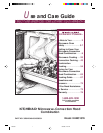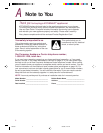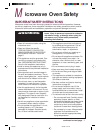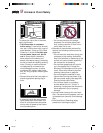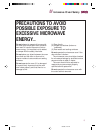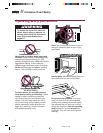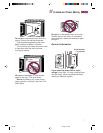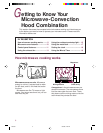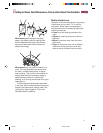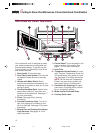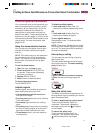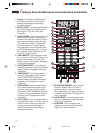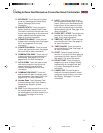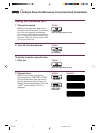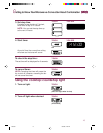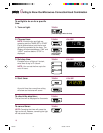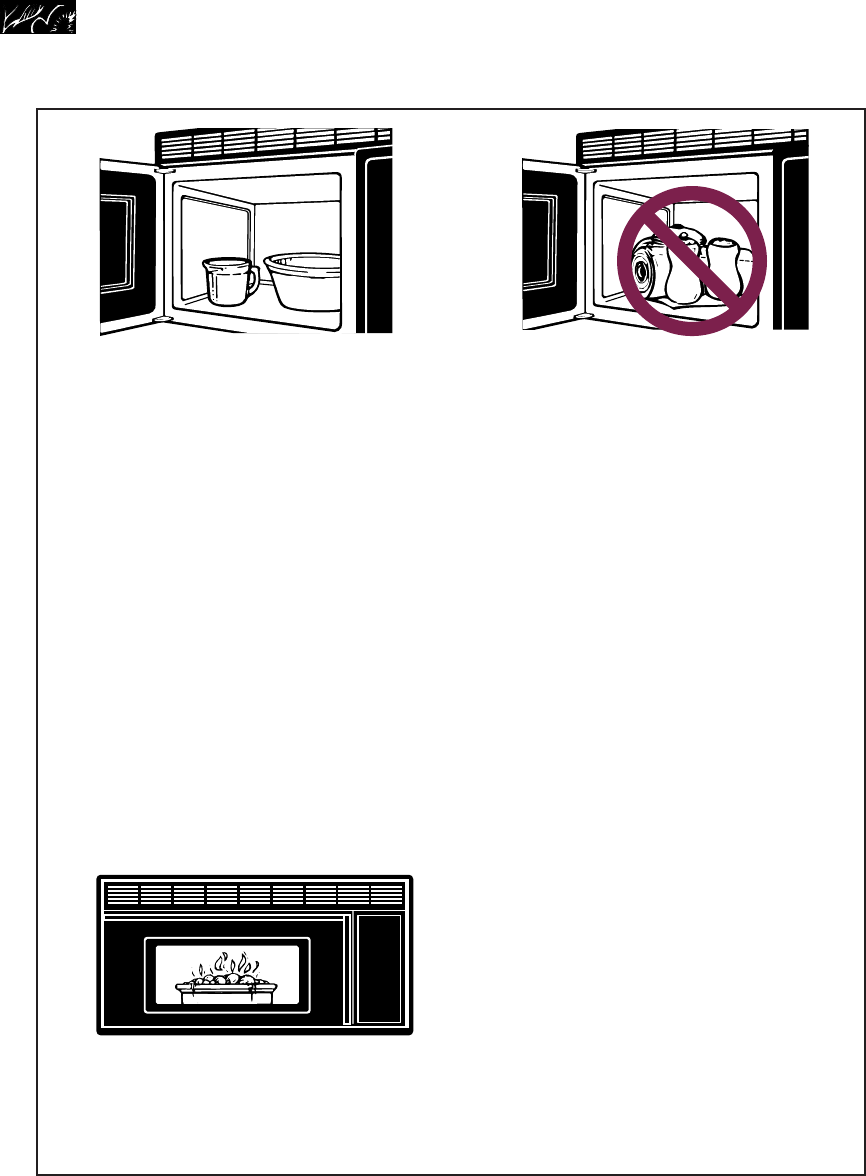
4
To reduce the risk of fire in the oven
cavity (continued):
–Test dinnerware or cookware
before using. To test a dish for safe
use, put it into the oven with a cup of
water beside it. Cook at 100% Cook
Power for 1 minute. If the dish gets
hot and water stays cool, do not
use it. Some dishes (melamine,
some ceramic dinnerware, etc.)
absorb microwave energy, becoming
too hot to handle and slowing cooking
times. Cooking in metal containers
not designed for microwave use
could damage the oven, as could
containers with hidden metal (twist-
ties, foil lining, staples, metallic glaze
or trim).
–Remove wire twist-ties from paper or
plastic bags before placing bag in
oven.
–If materials inside the oven should
ignite, keep oven door closed, turn
oven off, and disconnect the power
cord or shut off power at the fuse or
circuit breaker panel.
– Do not use the cavity for storage
purposes. Do not leave paper prod-
ucts, cooking utensils, or food in the
cavity when not in use.
• Because of the automatic exhaust fan
feature, the following cautions must be
observed:
–Do not leave the area when using your
cooktop at a high setting. Accidental
fires from boilovers or spattering on the
surface unit could spread, especially if
the exhaust fan is operating.
–Do not allow grease and soil to build
up in the grease filter. Exhaust fan
efficiency will decrease and fire could
result. Clean often following the filter
cleaning instructions on page 64.
–Do not change the cooktop or oven
lights without turning the power off at
the main power supply (see page 65).
Electrical shock could result.
–Do not flame foods on a cooktop
surface below this unit. The fan, if
operating, could spread the flame and
cause personal injury or property
damage.
• Use care when cleaning the vent hood
filter. Corrosive cleaning agents, such as
lye-based oven cleaners, could damage
filter.
• Read and follow “Operating safety
precautions” starting on page 6.
Microwave Oven Safety
4359334 8/28/98, 12:01 PM4



